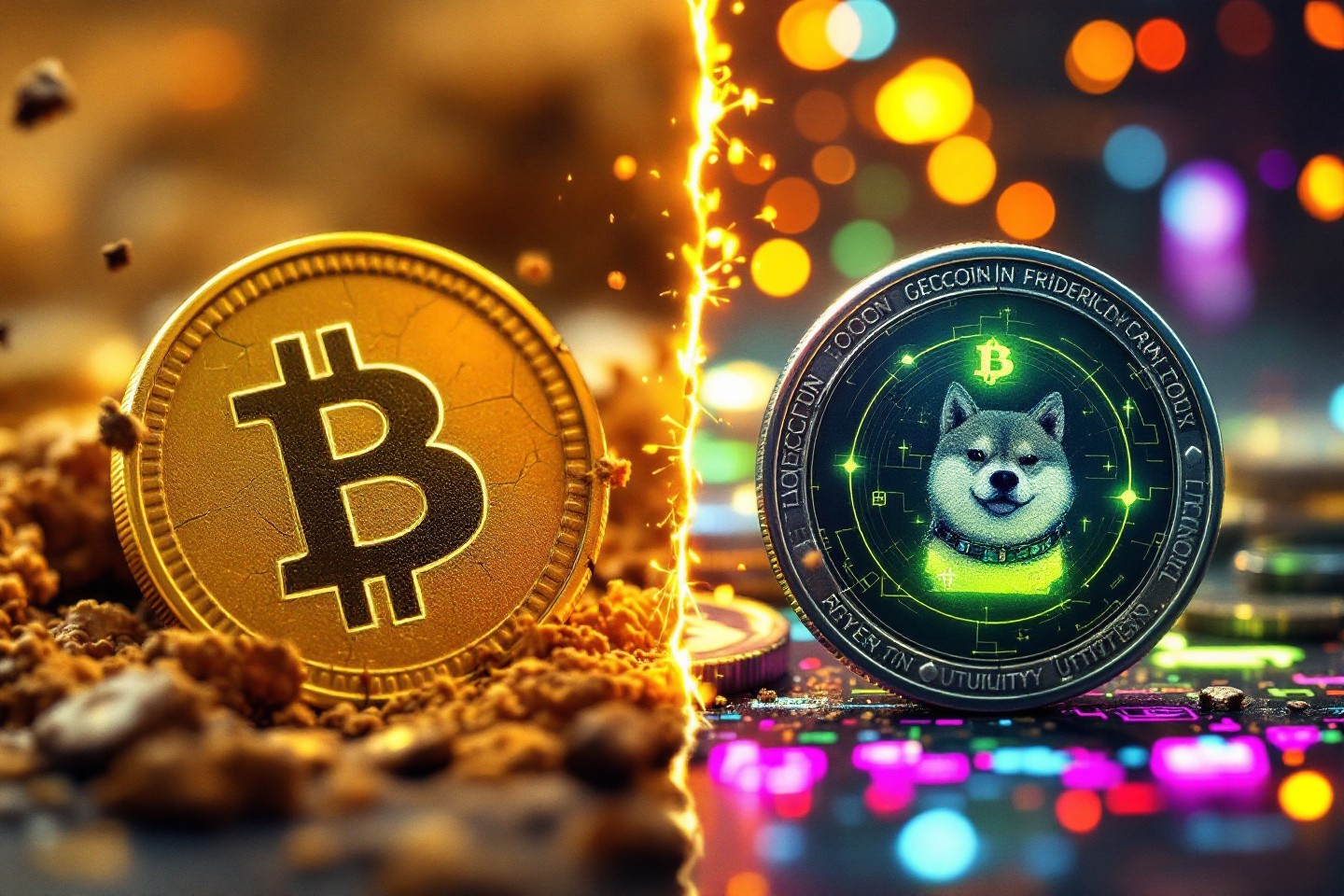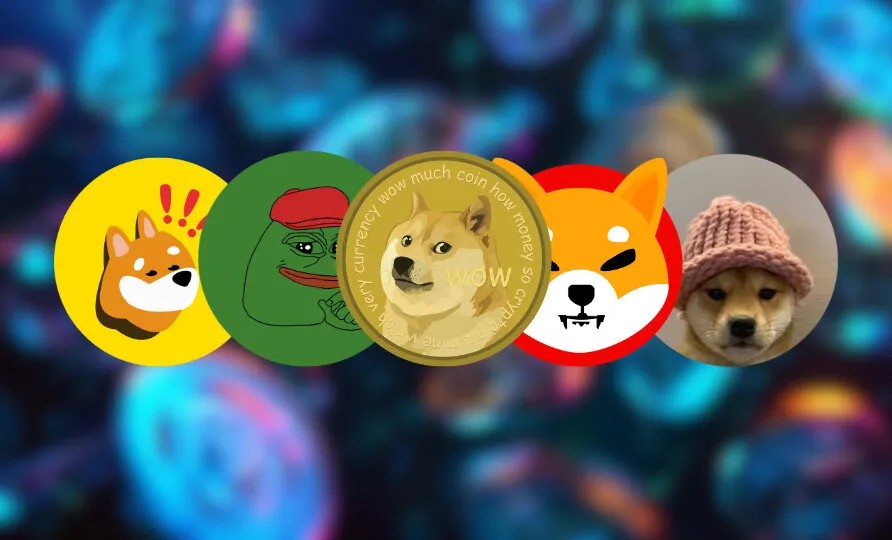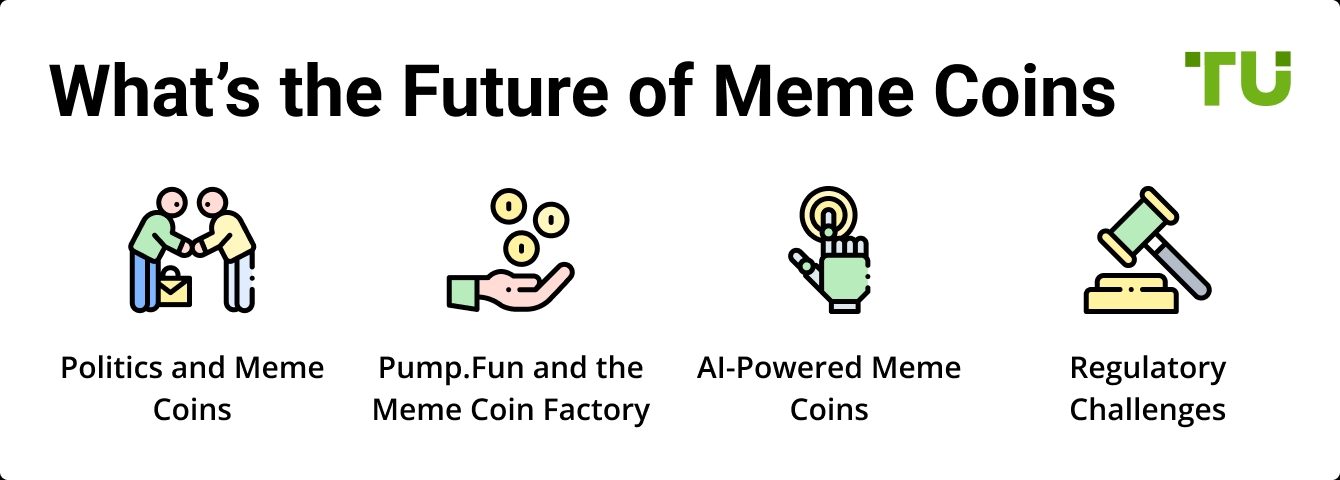Are Meme Coins Dead In 2025



Editorial Note: While we adhere to strict Editorial Integrity, this post may contain references to products from our partners. Here's an explanation for How We Make Money. None of the data and information on this webpage constitutes investment advice according to our Disclaimer.
Meme coins are not dead, but their hype-driven growth has slowed. While many speculative tokens have faded, some — like Dogecoin and Shiba Inu — are evolving with real-world use cases in DeFi and payments. Future success depends on strong communities, innovation, and integration with blockchain utilities.
This article explores the rise, fall, and evolution of meme coins, analyzing their past speculative growth, major crashes, and ongoing transformations. We’ll examine why some meme coins failed, regulatory challenges, and the shift toward utility-based projects. Additionally, we’ll discuss expert insights on future trends and key considerations for investors navigating this volatile market.

Risk warning: Cryptocurrency markets are highly volatile, with sharp price swings and regulatory uncertainties. Research indicates that 75-90% of traders face losses. Only invest discretionary funds and consult an experienced financial advisor.
The rise and fall of meme coins

Meme coins are cryptocurrencies inspired by internet memes or cultural phenomena, often created as humorous or satirical projects. Unlike traditional cryptocurrencies like Bitcoin, which aim to address specific financial issues, meme coins typically lack inherent utility and are driven primarily by community engagement and speculative trading.
The rise of meme coins
The inception of meme coins dates back to late 2013 with the creation of Dogecoin, developed as a lighthearted take on the popular Doge meme. Initially considered a joke, Dogecoin's community-driven approach and endorsements from high-profile figures like Elon Musk propelled it into mainstream attention. This success paved the way for a multitude of other meme coins, including Shiba Inu and Pepe, which capitalized on viral internet culture and attracted speculative investors.
In 2024, the meme coin market experienced exponential growth, with some tokens delivering returns exceeding 1,300%. This surge was fueled by social media hype, celebrity endorsements, and the allure of rapid financial gains, drawing in a wave of retail investors eager to participate in the burgeoning crypto market.
The fall of meme coins
Despite their meteoric rise, meme coins have been plagued by extreme volatility and numerous controversies. Many of these tokens experienced sharp declines in value, often shortly after peaking. Analyses indicate that 42% of political meme coins lost half their value within one to two days of reaching their all-time highs, with 97% trading at more than 80% below their peak prices.
High-profile scandals have further tarnished the reputation of meme coins. In December 2024, internet personality Haliey Welch launched the $HAWK token, which soared to a market capitalization of nearly $500 million before crashing to $25 million. This collapse led to allegations of a "pump-and-dump" scheme and insider trading, resulting in legal actions and significant financial losses for investors.
Similarly, political figures have ventured into the meme coin space with contentious outcomes. Former U.S. President Donald Trump introduced the $TRUMP coin in January 2025, which initially garnered substantial attention but subsequently faced criticism over potential conflicts of interest and ethical concerns. The coin's value experienced significant fluctuations, leading to investor apprehension.
In Argentina, President Javier Milei's endorsement of the $LIBRA meme coin resulted in a scandal after the coin's value plummeted, prompting fraud allegations and calls for impeachment. Over 110 investors filed complaints, highlighting the risks associated with political figures promoting speculative digital assets.
Regulatory responses and market impact
The proliferation of meme coins has prompted regulatory scrutiny. The U.S. Securities and Exchange Commission (SEC) clarified that certain meme coins are considered collectibles rather than securities, exempting them from specific registration requirements. However, the lack of clear regulations has left investors vulnerable to fraudulent schemes and market manipulation.
The broader cryptocurrency market has also felt the impact of the meme coin phenomenon. While meme coins contributed to the crypto rally in 2024, their subsequent decline has been linked to a downturn in the overall market. The market capitalization of meme coins dropped from a peak of $137 billion in December 2024 to $56.2 billion by late February 2025, coinciding with declines in major cryptocurrencies like Bitcoin and Ethereum.
Are meme coins truly dead?
Meme coins — cryptocurrencies born from internet culture and humor — have experienced a rollercoaster ride in the crypto market. From their meteoric rise to recent controversies, the question arises: Are meme coins truly dead? Let’s delve into the current landscape to uncover the answer.
The meteoric rise and tumultuous fall
In late 2024, meme coins like Dogecoin and Shiba Inu captured the imagination of investors, driven by social media buzz and celebrity endorsements. The market capitalization of these tokens soared, with some reaching unprecedented valuations. However, this rapid ascent was followed by a series of events that shook investor confidence.
One notable incident was the launch of the $LIBRA token, associated with Argentine President Javier Milei. Promoted as a means to support economic growth, $LIBRA initially surged in value. However, it soon experienced a dramatic collapse, leading to allegations of a “rug pull” scheme. This incident not only resulted in significant financial losses for investors but also sparked investigations into potential corruption and fraud.
Similarly, the introduction of the $TRUMP and $MELANIA tokens by former U.S. President Donald Trump and his wife added fuel to the meme coin frenzy. While these tokens initially attracted substantial attention, they also faced criticism over potential conflicts of interest and ethical concerns. The value of these coins experienced significant fluctuations, leading to investor apprehension.
The current state: A temporary lull or the end?
Recent data indicates a sharp decline in meme coin activity. Metrics from platforms tracking meme coin trading have plummeted by over 90% since their February peak, reflecting a waning interest among investors. The total market capitalization of meme coins has also dropped from a historic high of $124 billion in December 2024 to $54 billion.
Bobby Ong, co-founder of a major crypto analytics platform, commented on this trend, stating that while "meme coins are dead now," they have historically been cyclical. This suggests that the current downturn may be temporary, with the potential for a resurgence in the future.
The resilience of internet culture
Despite the recent downturn, the spirit of meme coins — rooted in internet culture and community engagement — remains resilient. The very nature of memes is their unpredictability and ability to resurface in new forms. As long as online communities thrive, the potential for meme coins to make a comeback cannot be dismissed.
Types of meme coins that are dead
Several types of meme coins have failed to sustain interest and have effectively become obsolete. The most common examples include celebrity-endorsed meme coins, which often experience short-lived hype before crashing due to lack of real support or development. Coins such as SaveTheKids (KIDS), which was heavily promoted by influencers but later exposed as a pump-and-dump scheme, serve as cautionary tales.
Similarly, many dog-themed meme coins that tried to replicate Dogecoin’s success, such as Kishu Inu (KISHU) and Akita Inu (AKITA), have faded into irrelevance due to oversaturation and lack of distinct utility. Seasonal or event-based meme coins, like Halloween Inu and Santa Floki, also tend to die quickly as they rely solely on temporary trends rather than long-term viability. The failure of these coins highlights the importance of sustainability and real-world application in the crypto space.
What’s next for meme coins?
Meme coins have captivated the crypto world, blending internet culture with speculative trading. While some believe they are fading, recent trends suggest otherwise. The landscape is evolving, with new forces shaping the market.

Politics and Meme Coins
A recent example is the launch of the $TRUMP token, which surged over 300% before crashing. This event highlights how political figures and celebrities can influence speculative assets. However, such hype-driven coins often lack long-term stability.
Pump.Fun and the Meme Coin Factory
Platforms like Pump.Fun have democratized meme coin creation, leading to an explosion of tokens — over six million in early 2025. While this opens the market to creativity, the majority of these coins fail, reinforcing the importance of selecting projects with strong communities and use cases.
AI-Powered Meme Coins
A new wave of AI-driven meme coins is emerging, integrating chatbots and interactive elements. Coins like GOAT and AIXBT engage users beyond simple speculation, suggesting a future where meme coins evolve into functional assets.
Regulatory Challenges
With scams and pump-and-dump schemes rampant, regulators are tightening oversight. The SEC is increasing scrutiny, signaling a potential crackdown on unregulated meme coin projects.
The Future: Evolution or Extinction?
Meme coins must offer real-world utility — integrating DeFi or gaming — to sustain long-term interest. Investors should focus on community strength, utility, and regulatory risks to navigate this volatile space. While many projects will vanish, those adapting to new trends may thrive.
| Min. Deposit, $ | Coins Supported | Futures leverage | Spot Maker Fee, % | Spot Taker fee, % | Government-regulated | TU overall score | Open an account | |
|---|---|---|---|---|---|---|---|---|
| 1 | 638 | 100 | 0,1 | 0,1 | Yes | 9.2 | Open an account Your capital is at risk. |
|
| 1 | 2276 | 125 | 0 | 0,05 | No | 9.1 | Open an account Your capital is at risk. |
|
| 10 | 329 | 125 | 0,08 | 0,1 | Yes | 8.9 | Open an account Your capital is at risk. |
|
| No | 415 | 100 | 0,1 | 0,1 | Yes | 8.7 | Open an account Your capital is at risk. |
|
| 10 EUR | 831 | 100 | 0,1 | 0,1 | Yes | 8.65 | Open an account Your capital is at risk. |
|
| 1 | 701 | 200 | 0,2 | 0,2 | Yes | 8.5 | Open an account Your capital is at risk. |
Why trust us
We at Traders Union have over 14 years of experience in financial markets, evaluating cryptocurrency exchanges based on 140+ measurable criteria. Our team of 50 experts regularly updates a Watch List of 200+ exchanges, providing traders with verified, data-driven insights. We evaluate exchanges on security, reliability, commissions, and trading conditions, empowering users to make informed decisions. Before choosing a platform, we encourage users to verify its legitimacy through official licenses, review user feedback, and ensure robust security features (e.g., HTTPS, 2FA). Always perform independent research and consult official regulatory sources before making any financial decisions.
Learn more about our methodology and editorial policies.
If a coin has a huge pre-mined allocation, it means early insiders can dump on you
Meme coins aren’t dead, but making money from them has become a different game. If you’re just following social media hype, you’re already late. A smarter way is to track where big investors are putting their money before the masses notice. Many traders don’t realize they can use blockchain scanners like Nansen or Arkham to see which wallets are buying meme coins early. The goal isn’t to buy when a coin is trending — it’s to find the ones big players are accumulating before they explode. Instead of relying on influencer tweets, dig into DEX liquidity pools and watch where smart money moves.
Another mistake beginners make is ignoring the fine print of how these coins work. Some tokens charge high buy/sell fees — if you’re not careful, you’ll lose money just by trading. If a coin has a huge pre-mined allocation, it means early insiders can dump on you at any time. Instead, go for coins with equal distribution at launch, meaning no one gets an unfair advantage. Also, check if the liquidity is locked and the contract is renounced — this makes it much harder for developers to pull a scam and disappear with investors’ money.
Conclusion
Meme coins are far from dead, but the era of speculative frenzy without substance is fading. The future of these digital assets hinges on their ability to evolve beyond hype and integrate real-world utility. While many speculative projects will fade away, meme coins backed by strong communities, innovative applications, and decentralized finance (DeFi) integration have a higher chance of sustaining relevance.
For investors, meme coins can still present opportunities — but only with a strategic approach. Monitoring on-chain data, liquidity trends, and early whale accumulation is crucial for identifying promising tokens before they gain mainstream attention. Additionally, avoiding high-tax tokens and projects with disproportionate pre-mined allocations can help investors steer clear of being exit liquidity.
As the crypto market matures, meme coins will likely transform into assets with unique functionalities rather than just speculative vehicles. Projects integrating with blockchain gaming, DeFi, and NFT ecosystems will stand out, while those relying purely on hype cycles will struggle to maintain long-term value.
With the next bull run, meme coins could see renewed attention, but the market will favor those that adapt to changing investor expectations and regulatory landscapes. As always, due diligence, risk management, and a deep understanding of market trends will be key for navigating the evolving world of meme coins.
FAQs
Can meme coins still be profitable?
Yes, meme coins can still be profitable, but they require careful timing and risk management. Traders should look for projects with strong communities and potential real-world use cases rather than relying on pure speculation.
What are the biggest risks of investing in meme coins?
The biggest risks include extreme volatility, lack of utility, regulatory uncertainty, and the potential for scams or rug pulls. Many meme coins rely solely on hype, making them risky long-term investments.
Which meme coins have the best long-term potential?
Dogecoin and Shiba Inu have shown resilience due to strong communities and ongoing development. Coins that expand into DeFi, gaming, or utility-driven applications are more likely to sustain long-term interest.
Will meme coins make a comeback in the next bull run?
Meme coins tend to gain popularity during bullish market cycles when retail investors are more active. While they may see short-term spikes, only those with strong development and use cases will maintain long-term relevance.
Related Articles
Team that worked on the article
Parshwa is a content expert and finance professional possessing deep knowledge of stock and options trading, technical and fundamental analysis, and equity research. As a Chartered Accountant Finalist, Parshwa also has expertise in Forex, crypto trading, and personal taxation. His experience is showcased by a prolific body of over 100 articles on Forex, crypto, equity, and personal finance, alongside personalized advisory roles in tax consultation.
Chinmay Soni is a financial analyst with more than 5 years of experience in working with stocks, Forex, derivatives, and other assets. As a founder of a boutique research firm and an active researcher, he covers various industries and fields, providing insights backed by statistical data. He is also an educator in the field of finance and technology.
As an author for Traders Union, he contributes his deep analytical insights on various topics, taking into account various aspects.
Mirjan Hipolito is a journalist and news editor at Traders Union. She is an expert crypto writer with five years of experience in the financial markets. Her specialties are daily market news, price predictions, and Initial Coin Offerings (ICO).
Risk management is a risk management model that involves controlling potential losses while maximizing profits. The main risk management tools are stop loss, take profit, calculation of position volume taking into account leverage and pip value.
Bitcoin is a decentralized digital cryptocurrency that was created in 2009 by an anonymous individual or group using the pseudonym Satoshi Nakamoto. It operates on a technology called blockchain, which is a distributed ledger that records all transactions across a network of computers.
Insider trading is the illegal practice of buying or selling a company's securities (such as stocks or bonds) based on non-public, material, and confidential information about the company. This information is typically known only to insiders, such as company executives, employees, or individuals with close connections to the company, and it gives them an unfair advantage in the financial markets.
Crypto trading involves the buying and selling of cryptocurrencies, such as Bitcoin, Ethereum, or other digital assets, with the aim of making a profit from price fluctuations.
Fundamental analysis is a method or tool that investors use that seeks to determine the intrinsic value of a security by examining economic and financial factors. It considers macroeconomic factors such as the state of the economy and industry conditions.






























































































































